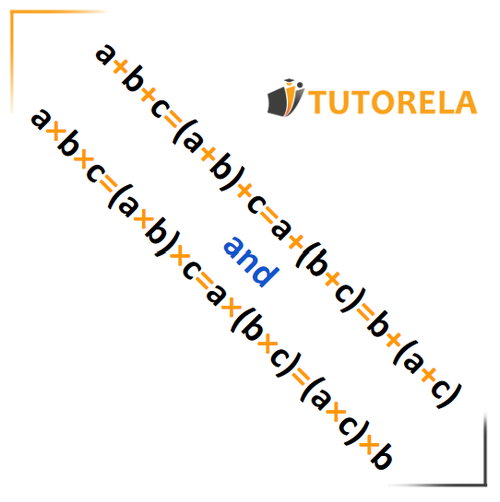The associative property tells us that that we can change the grouping of factors (in multiplication) or addends (in addition) in an expression without changing the end result.
Typically, we use parentheses to associate, since they come first in the order of operations (PEMDAS).

For example:
The expression
Can be associated as